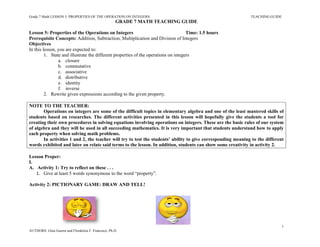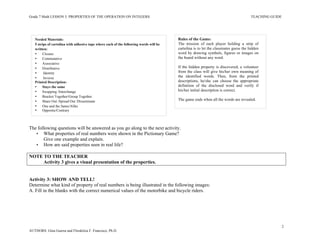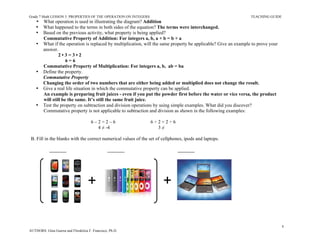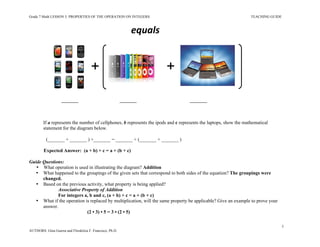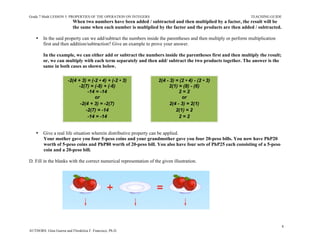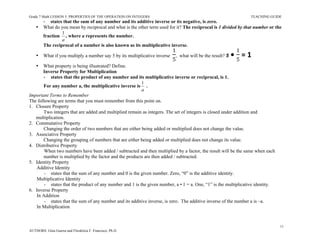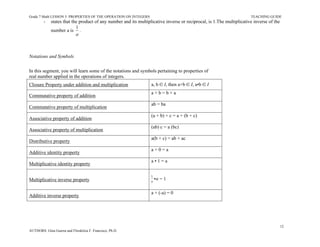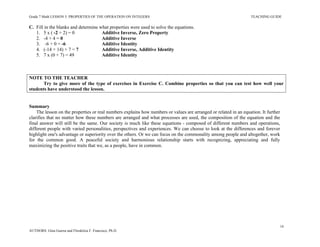This document provides a teaching guide for a Grade 7 math lesson on the properties of operations on integers. It includes 5 activities to help students understand properties such as closure, commutative, associative, distributive, identity, and inverse. Students will state and illustrate the properties, rewrite expressions according to properties, and determine which property diagrams represent. The lesson aims to give students tools for solving equations involving integer operations and emphasizes understanding and applying properties when solving problems.
